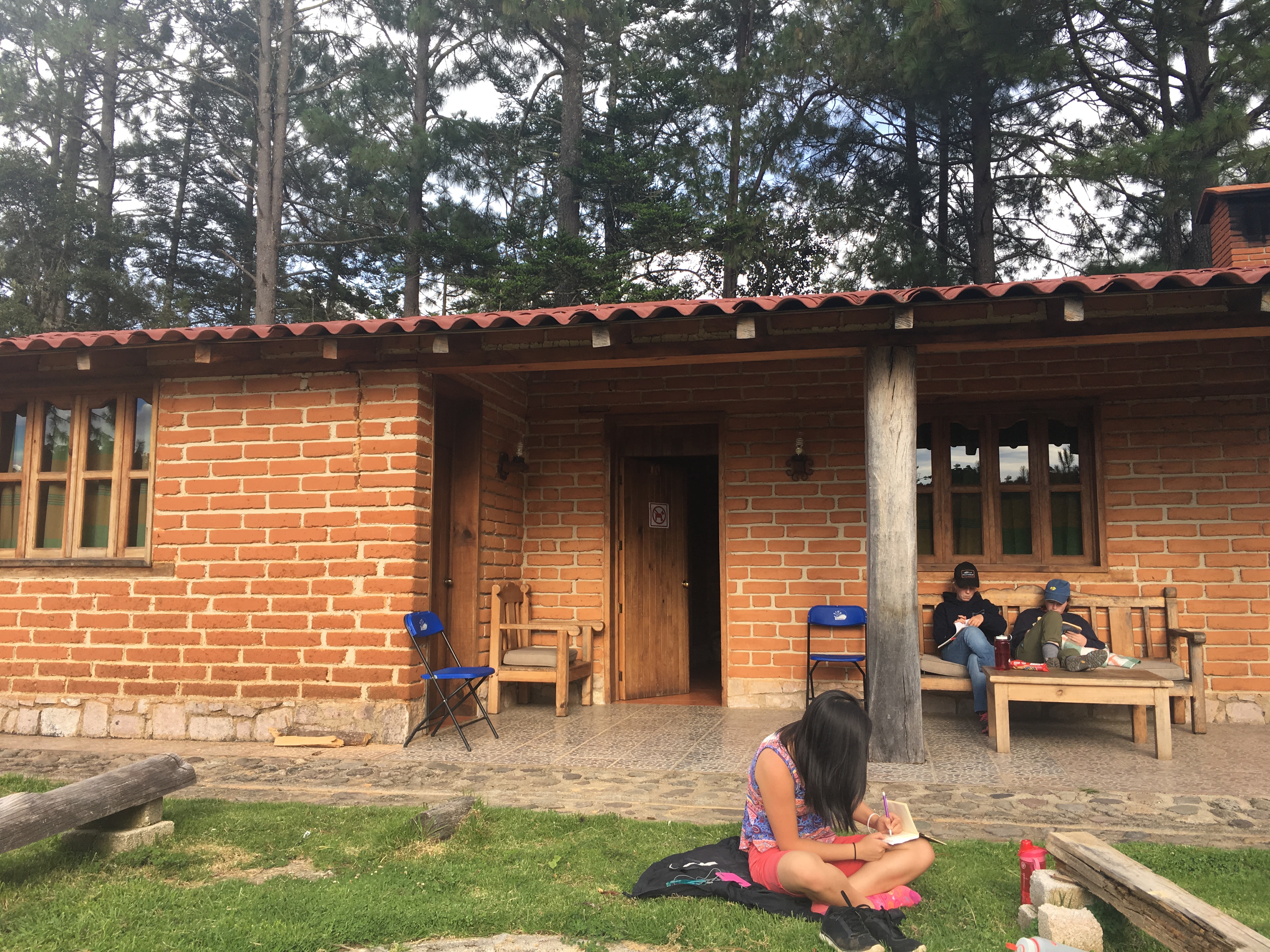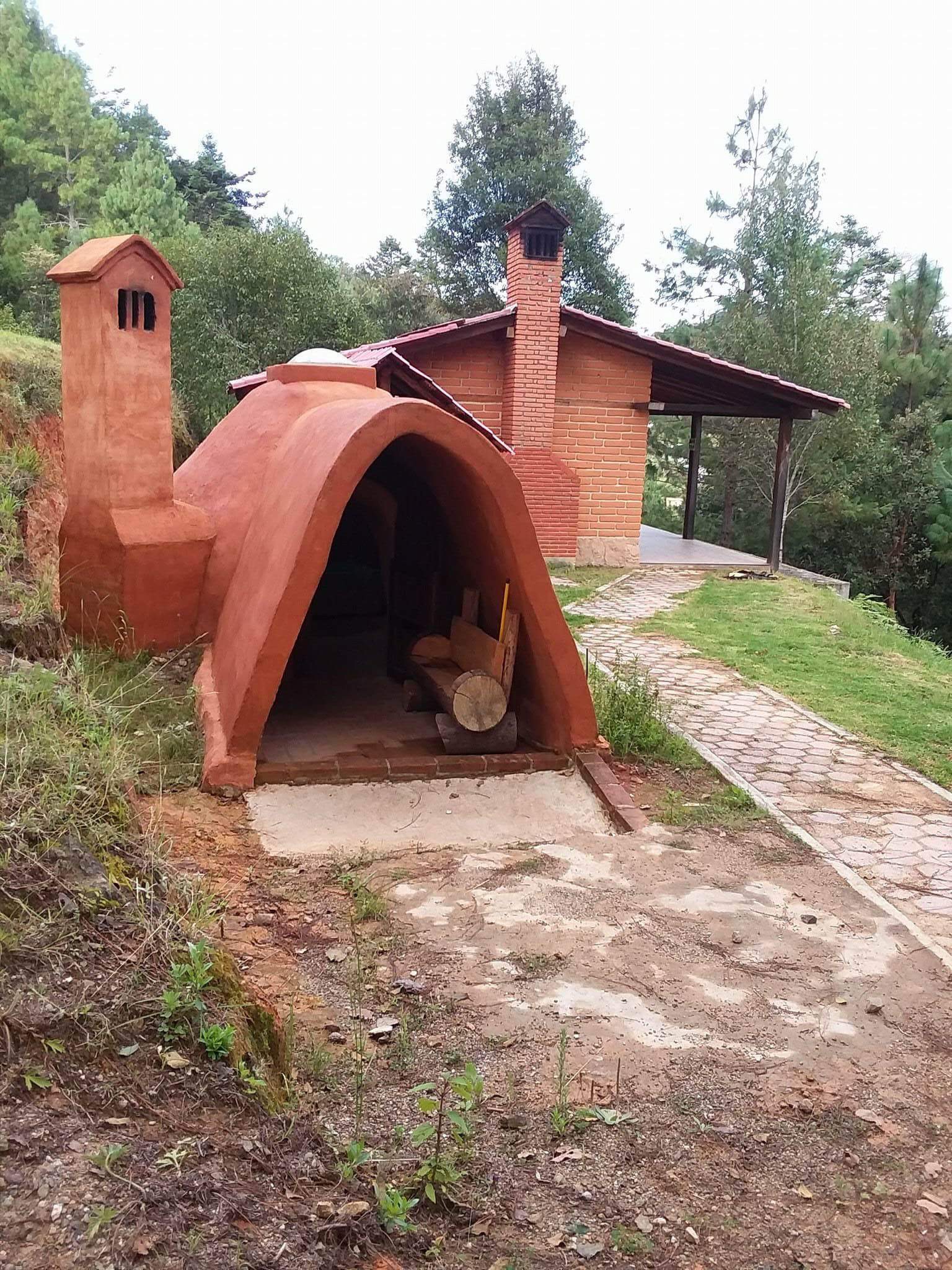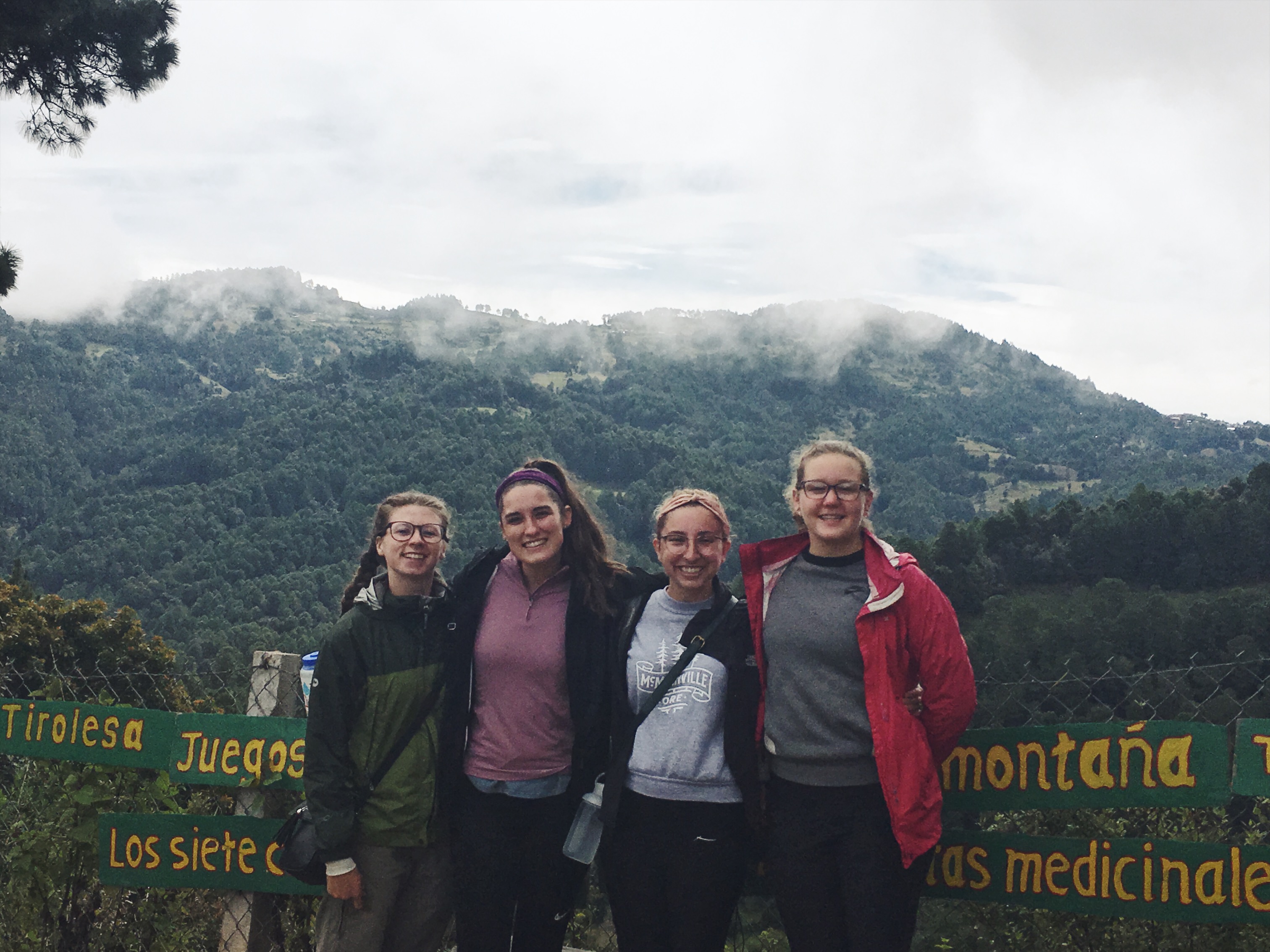The third weekend in September, at the end of our Spanish Intensivo and right before the beginning of Term II, we set off to Pueblos Mancomunados del Norte, in Oaxaca’s Sierra Norte. More specifically, we travelled to a small town called La Nevería. While there, we were honored to be welcomed into a Zapotec community to learn about their culture and traditions. The community shared with us their lifestyle, educating us on the food, the agriculture, the economy, and crucially for me, a public health advocate, their herbal medicine traditions.

We loaded ourselves into a van and, after several hours of windy roads, stepped off onto a beautiful new land. I lifted my eyes up and saw green. Deep, deep green. Green in the vast forest atop the rolling hills, green vegetation in the crevices of the earth, green in the strong growing crops of corn and a multitude of vegetables. The wind was fierce and biting. And I was home.
We were shown our cabins and told that the electricity would come on in a few hours, usually with the setting sun. We had dinner in the darkness, tables lit with dim candlelight, before man-made electricity illuminated the tables and the Zapotec women working hard to prepare our delicious food.

La Nevería is a small pueblo two hours from the city of Oaxaca, with a population of about one hundred people. Its name, which is derived from the Spanish word for snow, is a reminder that its first inhabitants took advantage of the snow and ice that fell upon the land by commercializing it as ice which they sold to the city of Oaxaca and other towns. It is self-sufficient and follows a self-governance legal structure known as indigenous customary law, which among other things, secures Zapotec rights over water, land, and natural resources. Today, the Zapotecs of Nevería grow their own crops, farm trout, conserve electricity and water, produce biodegradable soap, make and sell apple and pear preserves and traditional bread called pan serrano, and live their lives peacefully.
Throughout the next two days we had the opportunity to accompany some of the residents on their daily activities, and to explore the land. My group and I were honored to help a woman in her garden. We removed our jackets, rolled up our sleeves, and dug our fingers into the soil. I felt alive with dirt under my nails, pulling weeds, and planting food. Rollie pollies hid within the roots, spiders made themselves known, and other bugs that we had never seen before surprised us at their own leisure. After the planting, we ran our hands underneath cold water and made our way back to the kitchen to help cook; by help cook, I mean that we collectively cut one squash and peeled some garlic. The effortless way that the women in the kitchen prepared our food was magic and so much quicker without us in the way. The other half of our group went on a strenuous hike to a waterfall and came back with sore bodies, but excitement in their eyes. I think that we often forget how amazing this earth is. And that we are here, in México, learning and enjoying it.

The night held my favorite activities of the trip. We had the option to experience an ancient medicinal practice called temazcal. Two medicinal doctors, Rodolfo, and his wife, Violeta, came to where we were staying and gave us the opportunity to experience this traditional bath, which is followed by a traditional massage. The bath consists of several different herbs that have medicinal qualities, including poleo, oregano, and chamomile. The point is to purify your mind, body, and spirit as you sweat among the herbs and flowers. The ceremony is often used by the Nahuas, Zapotecs, Mixtecs, Mayans, and other indigenous groups as a therapeutic and purifying ritual. The process is believed to remind one of the experience of being in the womb, and allows for the opportunity to be reborn again into the world, without worries, guilts, or current ailments. The experience was electrifying and completely calming at the same time. I walked into a clay hut and got into a rectangle wooden bath. Violeta then scooped beautiful, scalding purple-orange water out of a bucket and gently poured it on my body. Apparently, I was in there for forty minutes, but it felt like ten. I wanted it to last forever. When I was done, I wrapped myself into a blanket, Violeta gave me tea with honey, and then I walked back to my cabin and got into bed. Rodolfo then came in with a cloth and a wooden rod. He proceeded to wrap my feet up in the cloth, tightening it with the wood, and holding my limbs up in the air for around twenty seconds. He made his way up my whole body, tightening and releasing my body. An intense pressure followed by an intense release. He ended at my head, the most intense part, almost painful. The feeling afterwards was a combination of immense warmth and exhaustion. I probably slept better than I had in my entire life that night.
I think about this experience constantly. Learning about Zapotec communities of the Sierra Norte, their sense of pride when growing all of their own food and preparing it by hand, how healthy they all seem to be, and their active lifestyle, which involves walking everywhere in the town, and from town to town. The sensation of the earth under my bare hands gave me a sense of how the Zapotec people feel when they are taking care of their planet, adding to the beauty of the earth with new plants and flowers. I learned about new herbs and their healing properties, like poleo, which was both in the bath and in the tea that I was given afterwards. Poleo is supposed to be extremely beneficial for the intestinal tract, including digestion and upper-respiratory tract infections. The opportunity to cleanse my body through the knowledgeable practices of herbal doctors was incredible, and the rest of the excursion followed that same feeling of elation.
